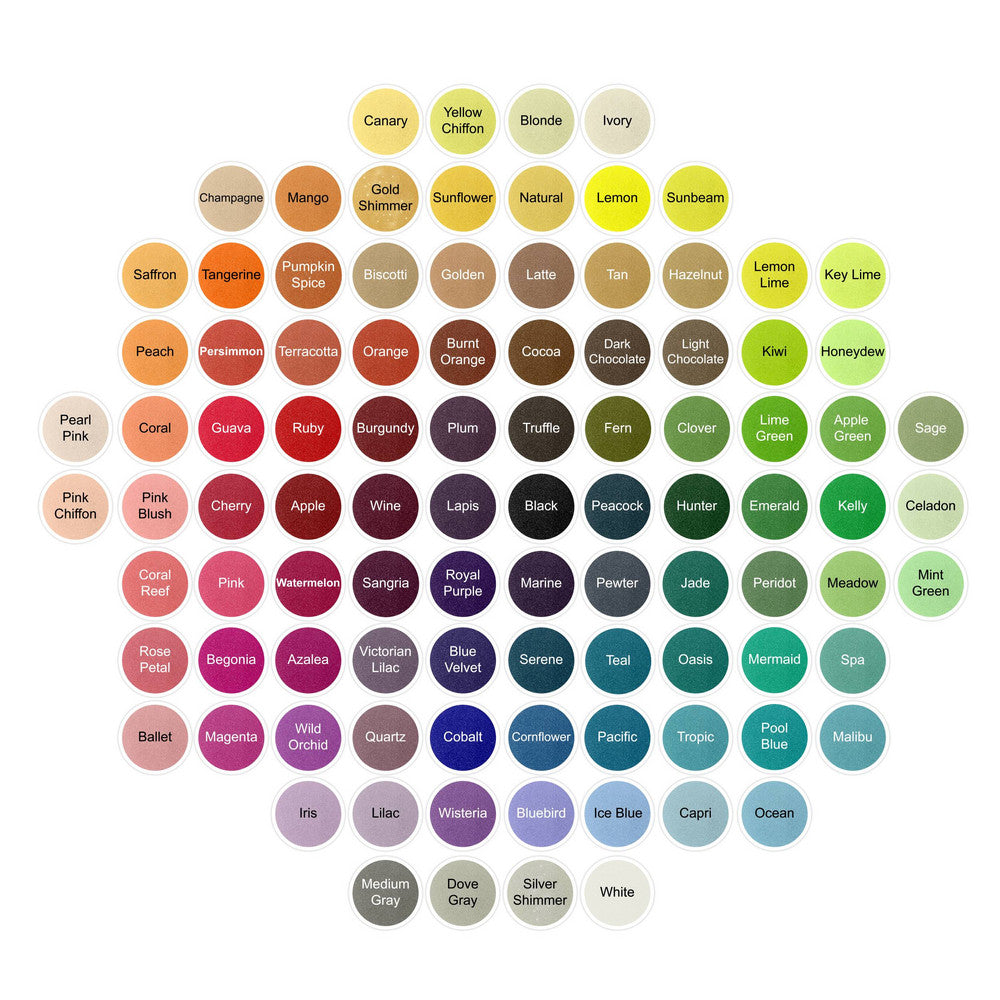While the wedding sand ceremony tradition isn't brand new, there are still many people who are unfamiliar with it. So, we’d like to answer some common questions we get about a unity sand ceremony. One thing we get asked a lot is how exactly the colored sand should be poured into the vases. There’s no one answer to this, but we’d like to give you a few ideas for your wedding sand ceremony. In this post, we’ll focus on the different orders and ways the sand is poured, and later this week we’ll give some ideas and tips on how to make different designs with the sand.
The order the wedding sand is poured depends largely on personal preference, but it can also depend on what type of ceremony you’re having.
In a religious ceremony, you can start with white or ivory wedding sand in the bottom of the vase, or you can have a third pouring vase with the white sand in it that is for the wedding officiate to pour into the vase first. The white sand at the bottom is representative of having Christ as the pure foundation of your marriage. Then, the bride and groom will pour their sand colors on top. You could also finish by topping off the vase with more of the white sand to represent Christ as the foundation and the head of your lives and marriage.

If your marriage is also the blending of families, a wedding sand ceremony is a great option. Each member of the family can have their own color of sand, and the end product will be a beautiful and colorful representation of the unique individuals combined into one family. Sometimes, with very large families, the bride and groom can each have their own color, and the children can all share a color to keep it simpler. A nice way to organize a blended family sand ceremony is to have the bride and groom each pour in a little bit of their colors first, then assign an order to the children – like oldest to youngest – and finish with the bride and groom adding more of their wedding sand on top of the children’s colors.


The ideas for a blended family also work if you want to include family members that are very important to you, like parents, siblings, or grandparents, as a way to show their support and dedication to your marriage, as well. A common tradition for unity candles is for the mothers of the couple to light the individual candles. If you want to do something like that with the wedding sand, you could have the mothers fill the individual pouring vases with their child’s sand color before the ceremony begins.
For the bride and groom’s sand, the way that it is poured into the vase is largely personal preference that can depend on what they want to symbolize or if they want the finished product to look a certain way. The two individual colors of wedding sand represent each person as an individual, and the combining of the two colors represents two lives joining. Just like the individual grains of sand cannot be separated, your lives are joined, too. With this in mind, one suggestion we give is to have the bride and groom each pour in some of their sand separately to represent them as an individual. Then, pour in both colors together to represent the joining of two lives.


If you’re trying to achieve a certain pattern with the wedding sand, you’ll have to be more strategic, and we’ll talk more about that in our next post, so stay tuned!
Click below for vow ideas:
Blended Family Vows
Wedding Sand Ceremony Vows











← Older Post Newer Post →